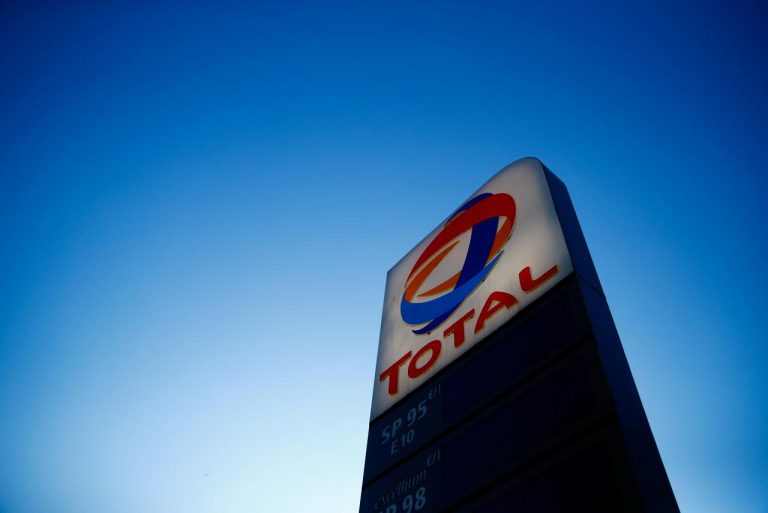Ενα Νέο Βιβλίο Δείχνει τον Δρόμο για την Ειρηνική Επίλυση των Διαφορών Αναφορικά με τα Θαλάσσια Σύνορα

Ενας Οδικός Χάρτης Μπορεί να Βοηθήσει τα Παράκτια Κράτη να Επωφεληθούν του Υποθαλάσσιου Πλούτου
ΟΥΑΣΙΓΚΤΟΝ: Ο ειδικός σε θέματα ενέργειας, Ρούντι Μπαρούντι, στο νέο του βιβλίο αναδεικνύει μηχανισμούς μείωσης της έντασης, οι οποίοι συχνά ξεχνιούνται αλλά μπορούν να βοηθήσουν στην εκμετάλλευση πετρελαίου και φυσικού αερίου αξίας δισεκατομμυρίων δολλαρίων.
Το βιβλίο Διαφωνίες επί των Θαλασσίων Συνόρων στην Ανατολική Μεσόγειο: Μια Πρόταση Επίλυσης διανέμεται από το Ινστιτούτο Μπρούκινγκς και σκιαγραφεί το εκτενές νομικό και διπλωματικό πλαίσιο το οποίο διατίθεται για χώρες με διαφιλονεικούμενα θαλάσσια σύνορα. Ο συγγραφέας Ρούντι Μπαρούντι συζητά την αυξάνουσα επιρροή του Διεθνούς Δικαίου της Θαλάσσης υπό την αιγίδα των Ηνωμένων Εθνών (United Nations Convention on the Law of the Sea – UNCLOS), οι κανόνες του οποίου αποτελούν πια την βάση για την επίλυση όλων, σχεδόν, των διαπραγματεύσεων και συμφωνιών στην θάλασσα. Εξηγεί, επίσης, πως οι πρόσφατες εξελίξεις στον επιστημονικό και τεχνολογικό τομέα – και ειδικά στην χαρτογράφηση ακριβείας – έχουν αυξήσει περαιτέρω την επιρροή των κανόνων του Διεθνούς Δικαίου της Θάλασσας, αφαιρώντας κάθε ενδεχόμενη ασάφεια από οποιαδήποτε διαπραγμάτευση που βασίζεται στους κανόνες του Δικαίου.
Το βιβλίο εστιάζει στην ανατολική Μεσόγειο, όπου οι πρόσφατες ανακαλύψεις υδρογονανθράκων ανέδειξαν το γεγονός ότι τα περισσότερα θαλάσσια σύνορα της περιοχής παραμένουν ακαθόριστα. Η αβεβαιότητα την οποία δημιουργεί αυτή η κατάσταση όχι μόνο καθυστερεί την εκμετάλλευση των πόρων και την διοχέτευση του πλούτου προς όφελος των κοινωνιών, αλλά δημιουργεί και κινδύνους θερμών επεισοδίων και πολέμων. Τέτοιου είδους προβλήματα υπάρχουν σε όλη την Γή. Ο Μπαρούντι σημειώνει, ωστόσο, ότι η δίκαιη επίλυσή τους σε μία περιοχή μπορεί να ενδυναμώσει την εμπιστοσύνη στους πολύπλευρους μηχανισμούς σε κάθε περιοχή.
Σε περίπτωση, σημειώνει, που οι χώρες της ανατολικής Μεσογείου συμφωνούσαν σε μια δίκαιη επίλυση των διαφορών τους με βάση το Διεθνές Δίκαιο, «θα ήταν μια έμπρακτη απόδειξη ότι η μεταπολεμική αρχιτεκτονική συλλογικής ασφάλειας παραμένει όχι μόνο εφικτή αλλά και απαραίτητη… θα απεδείκνυε σε όλον τον κόσμο ότι κανένα εμπόδιο δεν είναι τόσο μεγάλο και καμμία ιστορική εχθρότητα τόσο βαθιά ριζωμένη ώστε να μην υπερσκελίζεται από τον βασικό κανόνα στον οποίο συναίνεσαν όλα τα μέλη των Ηνωμένων Εθνών με την συμμετοχή τους σε αυτόν – την ευθύνη να επιλύουν τις διαφορές τους χωρίς την χρήση ή την απειλή βίας.»
Το βιβλίο μας υπενθυμίζει πως υπάρχουν μοχλοί οι οποίοι μπορούν να αμβλύνουν τις διπλωματικές ανισότητες, και αυτό είναι ιδιαίτερα χρήσιμο σε μια εποχή όπου η όλη ιδέα της πολυπλευρικής προσέγγισης βάλλεται από τις ίδιες χώρες οι οποίες την δημιούργησαν. Ο τρόπος γραφής του βιβλίου ζωντανεύει ένα θεματικό πλέγμα ιστορίας, γεωγραφίας, δικαίου και χαρτογραφίας, καθιστώντας τα θέματα αυτά προσιτά στο ευρύ κοινό στο οποίο απευθύνεται, καθώς και σε πολιτικούς και διπλωμάτες.
Ο Μπαρούντι εργάζεται εδώ και τέσσερις δεκαετίες στον ενεργειακό τομέα. Ανάμεσα στις πολυεθνικές εταιρείες, κυβερνήσεις και διεθνείς θεσμούς που έχει συμβουλέψει στο διάστημα αυτό συγκαταλέγονται τα Ηνωμένα Εθνη, η Ευρωπαϊκή Επιτροπή, το Διεθνές Νομισματικό Ταμείο και η Παγκόσμια Τράπεζα. Οι εξειδικευμένες γνώσεις του βρίσκονται στους τομείς του πετρελαίου και φυσικού αερίου, τα πετροχημικά, τον ηλεκτρισμό, την ενεργειακή ασφάλεια και την μεταρρύθμιση του ενεργειακού τομέα για να αντιμετωπίσει περιβαλλοντικά ζητήματα, την αγορά του άνθρακα, τις ιδιωτικοποιήσεις, και τις υποδομές. Είναι Διευθύνων Σύμβουλος της ανεξάρτητης συμβουλευτικής εταιρείας Qatar Energy and Environment Holding, με έδρα την Ντόχα του Κατάρ.
Το βιβλίο αυτό είναι απόσταγμα πολυετούς προσωπικής έρευνας, ανάλυσης και υπεράσπισης θέσεων του Μπαρούντι. Την επιμέλεια του κειμένου ανέλαβε η Debra L. Cagan, (Distinguished Energy Fellow, Transatlantic Leadership Network) και ο Sasha Toperich (Senior Executive Vice President, Transatlantic Leadership Network).
Το βιβλίο Διαφωνίες επί των Θαλασσίων Συνόρων στην Ανατολική Μεσόγειο: Μια Πρόταση Επίλυσης εκδίδεται από το Transatlantic Leadership Network (TLN), μια ένωση δικηγόρων, παικτών του ιδιωτικού τομέα και αναλυτών οι οποίοι στοχεύουν στον διαρκή εκσυγχρονισμό των σχέσεων Ηνωμένων Πολιτειών και Ευρωπαϊκής Ενωσης. Η αρχική μορφή του βιβλίου ήταν ηλεκτρονική. Τώρα διανέμεται από τις Εκδόσεις του Ινστιτιούτου Μπρούκινγκς, που ιδρύθηκαν το 1916 για την έκδοση ερευνών του Ινστιτούτου, το οποίο θεωρείται από πολλούς ως το πιο αξιοσέβαστο ινστιτιύτο έρευνας των ΗΠΑ.
Πολλοί εξειδικευμένοι παρατηρητές πλέκουν το εγκώμιο του βιβλίου. Παραθέτουμε λίγα αποσπάσματα:
Douglas Hengel, Professional Lecturer in Energy, Resources and Environment Program, Johns Hopkins University School of Advanced International Studies, Senior Fellow at German Marshall Fund of the United States, and former State Department official: “Μέσα από αυτό το στοχαστικό και γλαφυρό βιβλίο, ο Ρούντι Μπαρούντι μας δίνει ένα πλαίσιο… το οποίο μας δείχνει τον δρόμο προς μια δίκαιη και ειρηνική λύση… οι χώρες της περιοχής, καθώς και η Ευρωπαϊκή Ενωση και οι Ηνωμένες Πολιτείες, θα έπρεπε να ασπαστούν την προσέγγιση του Μπαρούντι.
Andrew Novo, Associate Professor of Strategic Studies, National Defense University: “… Ενα καλά ισορροπημένο, καινοτόμο και θετικό μήνυμα το οποίο μπορεί να βοηθήσει πολλά θέματα να προοδεύσουν που δεν φαίνονται να επιδέχονται επίλυσης. Χρσιμοποιώντας το Διεθνές Δίκαιο, γεω-στοιχεία υψηλής ακρίβειας και μια ισχυρή οικονομική λογική, ο Μπαρούντι προσφέρει ένα πειστικό επιχείρημα υπέρ ενός συμβιβασμού, εφόσον, φυσικά, οι εμπλεκόμενες πλευρές θέλουν να ακούσουν.”







